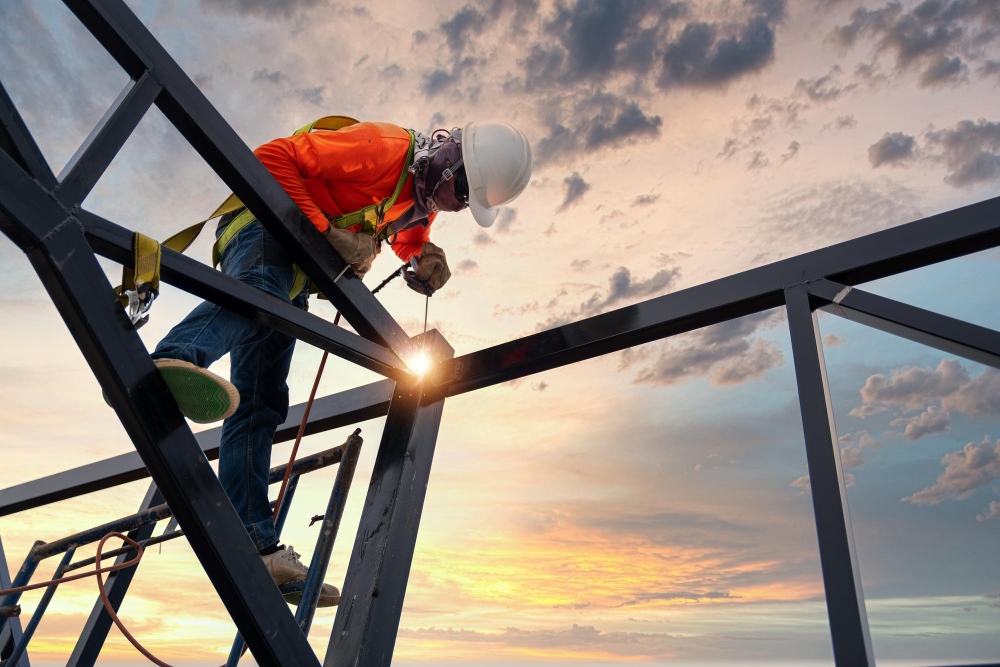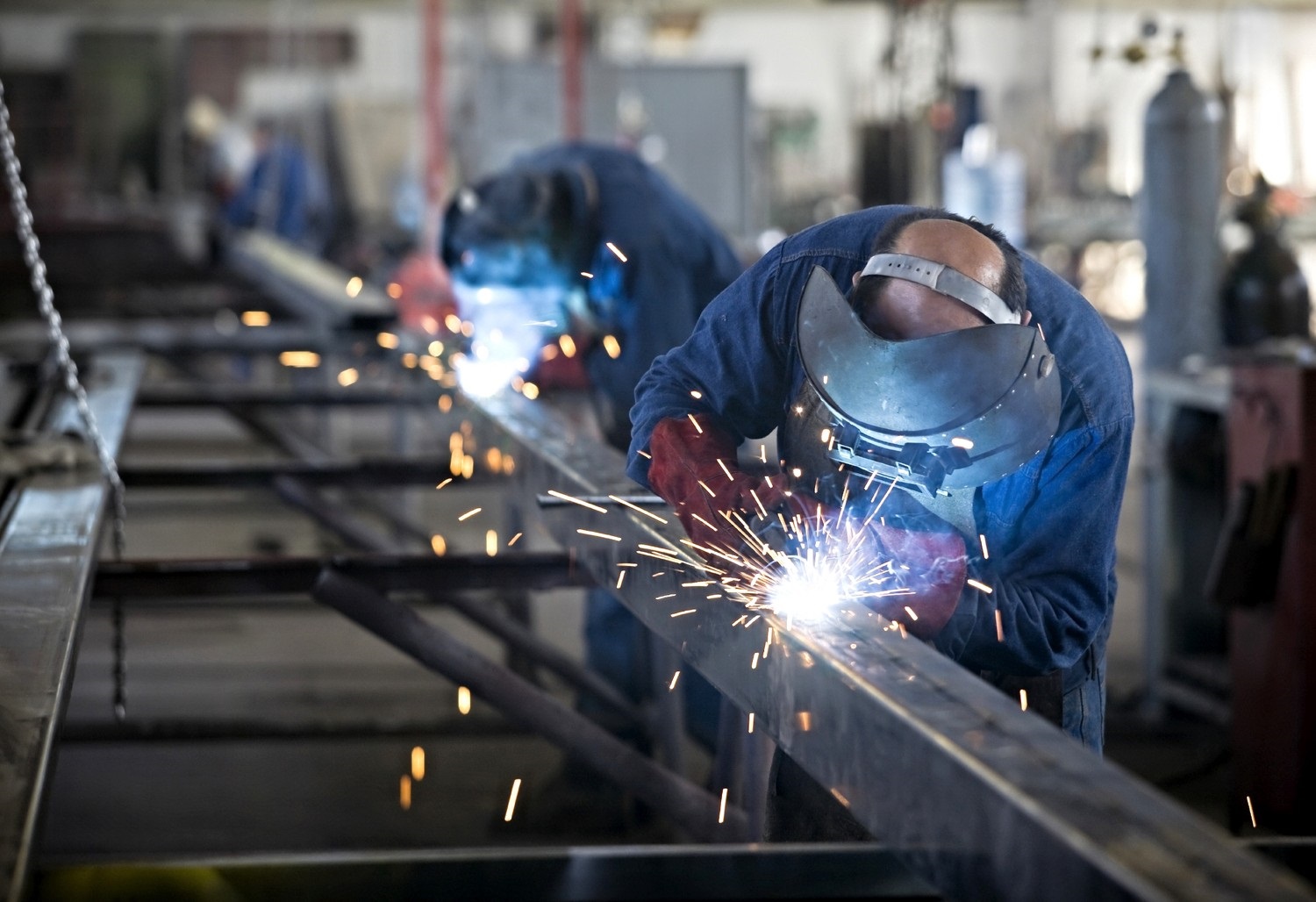Alpha Reo: Blazing A Trail in Reinforced Steel Solutions
Alpha Reo: Blazing A Trail in Reinforced Steel Solutions
Blog Article
Comprehensive Analysis of Cutting-Edge Techniques in Steel Fabrication Market
As the steel fabrication market proceeds to progress, the integration of advanced techniques has actually become essential for remaining affordable and fulfilling the needs of contemporary production standards. In this dynamic market where modern technology plays a crucial function, recognizing the nuances of these innovative techniques is not simply an option however a need for those looking to create ahead in the ever-evolving globe of steel fabrication.
Laser Cutting Improvements
In the realm of steel fabrication, laser reducing advancements have actually changed the precision and efficiency of steel shaping processes. By harnessing the power of focused laser beam of lights, producers can now accomplish unmatched levels of precision when puncturing numerous kinds of steels. This modern technology enables intricate designs to be carried out with marginal material waste, making it an affordable option for markets calling for high accuracy components.
One of the vital benefits of laser cutting is its ability to deal with a variety of products, consisting of stainless steel, light weight aluminum, and carbon steel, with convenience. The procedure generates tidy, burr-free edges, getting rid of the requirement for added completing steps. Moreover, the non-contact nature of laser reducing minimizes the risk of material contamination, causing better output.
Additionally, laser reducing machines can be configured to make swift, exact cuts, substantially reducing manufacturing time compared to traditional cutting approaches. This speed and accuracy make laser reducing specifically appropriate for automation environments where performance is critical. As modern technology continues to development, laser cutting is positioned to play a significantly essential role in the steel fabrication market.

CNC Machining Innovations
The advancement of CNC machining technologies has actually introduced a brand-new era of accuracy and efficiency in the steel construction market. Computer System Numerical Control (CNC) makers have actually changed steel fabrication by providing exceptional precision and repeatability in the production procedure. metal fabrication melbourne. Among the crucial advancements in CNC machining is the integration of innovative software application systems that allow real-time tracking and adjustments, causing improved performance and top quality control
In addition, the growth of multi-axis CNC makers has permitted for the construction of complex steel parts with intricate layouts that were formerly testing to produce. These machines can execute a wide variety of machining operations, consisting of milling, boring, turning, and grinding, all with high levels of precision.
Additionally, the incorporation of automation and robotics in CNC machining has structured production processes, decreased preparations, and decreased the margin of mistake. This integration of cutting-edge innovations not just improves efficiency yet likewise guarantees constant quality across all made steel components. Finally, CNC machining innovations remain to drive developments in the steel construction sector, setting new criteria for precision and productivity.
Automated Welding Technologies
Automated welding innovations have actually changed the steel fabrication market, improving efficiency and precision in the welding procedure. These advanced technologies utilize computer-controlled systems to automate the welding procedure, resulting in greater performance levels and boosted weld high quality. Among the essential advantages of automated welding is the capacity to perform intricate welds with constant use this link accuracy, minimizing the likelihood of mistakes and remodel.
Robotic welding systems go to the leading edge of automated welding technologies, offering unequaled rate and accuracy. These systems can take care of a large range of welding jobs, from easy to intricate, with convenience (steel fixing). By using sophisticated sensors metal fabrication melbourne and software application, robotic welders can adapt to variants in product and joint geometry, making sure an attire and reputable weld
Additionally, automated welding modern technologies improve office security by reducing the exposure of human welders to harmful fumes and extreme heat. As the steel fabrication industry remains to develop, incorporating automated welding modern technologies will certainly be vital for business wanting to remain affordable and fulfill the growing demands for high-quality welded items.
Robotics Integration in Manufacture
Making use of robot systems in fabrication procedures has ended up being a crucial method for enhancing effectiveness and precision in modern production settings. Robotics integration in steel fabrication uses a myriad of benefits, including enhanced efficiency, enhanced quality assurance, and boosted precaution. These sophisticated robotic systems are furnished with sophisticated sensors and programming capabilities, permitting them to carry out intricate jobs with a high degree of precision and repeatability.
One of the key benefits of robotics combination in steel fabrication is the capability to automate recurring jobs, such as product handling, reducing, welding, and assembly procedures. This not just speeds up manufacturing cycles but also lowers the threat of human error, bring about higher total item high quality. In addition, robots can operate 24/7, significantly enhancing production output and conference limited task deadlines.

3D Printing in Steel Manufacturing
Having changed the steel fabrication industry with robotics integration, the burgeoning exploration of 3D printing in steel production is poised to more development the realm of modern manufacturing methods. 3D printing, additionally referred to as additive manufacturing, uses unprecedented design freedom and intricacy, allowing the production of detailed steel frameworks that were formerly unattainable via typical manufacturing approaches. By making use of computer-aided design (CAD) software program, producers can precisely control the layer-by-layer deposition of steel material, resulting in get rid of improved geometries and performances.
Among the essential benefits of 3D printing in steel production is its ability to reduce product waste substantially. Unlike subtractive production procedures where excess product is cut away, 3D printing just makes use of the necessary quantity of steel needed for the last part. This performance not just leads to cost savings but additionally aligns with lasting production techniques by lessening environmental effect.
Furthermore, 3D printing allows rapid prototyping and customization, permitting the manufacturing of tiny batches of complex steel components with short lead times. As the modern technology remains to grow and come to be a lot more easily accessible, its integration right into mainstream steel fabrication procedures is expected to drive advancement and performance across the industry.
Verdict
To conclude, the steel fabrication sector has actually seen considerable improvements in methods such as laser cutting, CNC machining, automated welding, robotics integration, and 3D printing. These innovative innovations have actually changed the method steel items are manufactured, bring about enhanced cost-effectiveness, accuracy, and efficiency. Proceeded financial investment in these ingenious methods is essential for the market to remain affordable and fulfill the demands of modern-day manufacturing procedures.
As the steel construction sector continues to develop, the assimilation of advanced strategies has become important for staying affordable and meeting the needs of modern-day production requirements.One of the crucial advantages of laser cutting is its ability to take care of a vast array of materials, consisting of stainless steel, light weight aluminum, and carbon steel, with simplicity.Automated welding technologies have revolutionized the steel fabrication sector, improving performance and accuracy in the welding procedure.Having actually revolutionized the steel construction market through robotics assimilation, the blossoming exploration of 3D printing in steel manufacturing is positioned to additional breakthrough the realm of modern-day manufacturing methods.In final thought, the steel manufacture market has actually seen substantial innovations in methods such as laser cutting, CNC machining, automated welding, robotics combination, and 3D printing.
Report this page